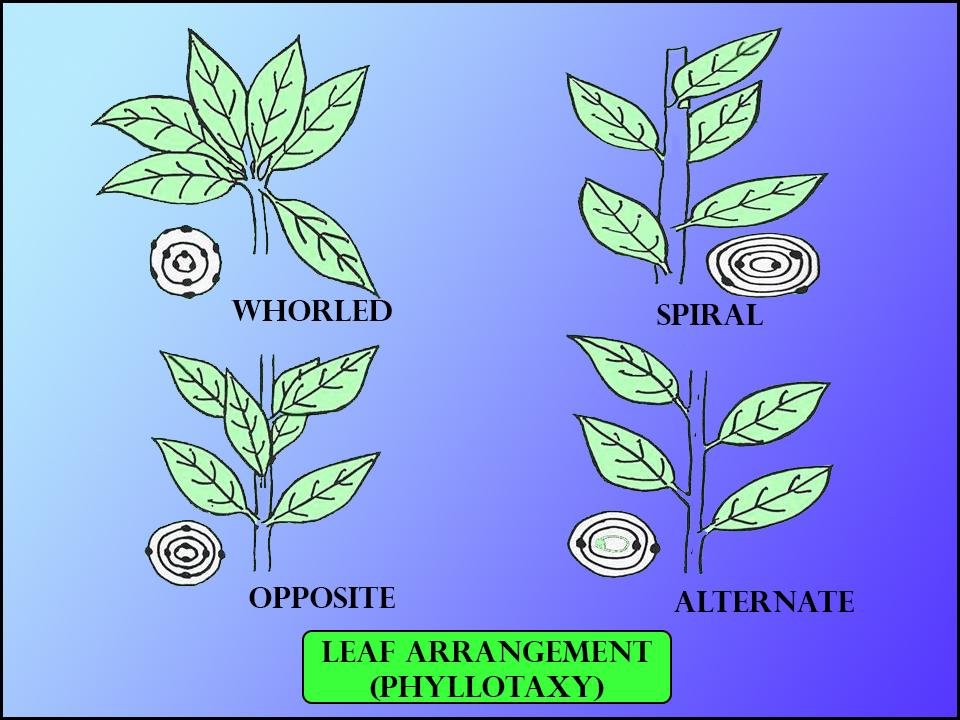
In Spiral Phyllotaxy, the number of leaves at each node is
(a) One
(b) Two
(c) Many
(d) Three
Answer
568.2k+ views
Hint: The arrangement of leaves in a different rotational angle of the stem which is found to be in various patterns naturally and shows the variation in different plants.
Complete step by step answer:
Phyllotaxy or phyllotaxy is the arrangement derived from the Greek word phyllon meaning “leaf” and taxis meaning “arrangement”. The pattern of arrangement of the leaves on the stem of the plants is phyllotaxy. Spiral phyllotaxy has a single leaf on each node.
The term phyllotaxy was coined by Charles Bonnet to describe the arrangement of leaves on a plant.
There are three basic types of phyllotaxy in plants, they are:
Opposite phyllotaxy – it is the basic arrangement of leaves on the stem. From the opposite sides of the stem from its base, two leaves arise.
Spiral phyllotaxy – in this arrangement only a single leaf arises at each node and borne along the stem alternately in an ascending spiral.
Whorled phyllotaxy – in this arrangement, several leaves may arise from the same node on a stem.

With an alternate or spiral arrangement, each leaf arises at a different node on the stem.
The rotational angle from the leaf in a repeating spiral can be represented by a fraction of a full rotation around the stem.
So, the correct answer is ‘(a) One'.
Note: Leonardo da Vinci made observations of the spiral arrangements of plants first. In 1754, Charles Bonnet observed that the spiral phyllotaxy of plants was frequently expressed in both clockwise and anticlockwise golden ratio series. The mathematical observations of phyllotaxy were done by Karl Friedrich Schimper and his friend Alexander Braun in 1830.
Complete step by step answer:
Phyllotaxy or phyllotaxy is the arrangement derived from the Greek word phyllon meaning “leaf” and taxis meaning “arrangement”. The pattern of arrangement of the leaves on the stem of the plants is phyllotaxy. Spiral phyllotaxy has a single leaf on each node.
The term phyllotaxy was coined by Charles Bonnet to describe the arrangement of leaves on a plant.
There are three basic types of phyllotaxy in plants, they are:
Opposite phyllotaxy – it is the basic arrangement of leaves on the stem. From the opposite sides of the stem from its base, two leaves arise.
Spiral phyllotaxy – in this arrangement only a single leaf arises at each node and borne along the stem alternately in an ascending spiral.
Whorled phyllotaxy – in this arrangement, several leaves may arise from the same node on a stem.

With an alternate or spiral arrangement, each leaf arises at a different node on the stem.
The rotational angle from the leaf in a repeating spiral can be represented by a fraction of a full rotation around the stem.
So, the correct answer is ‘(a) One'.
Note: Leonardo da Vinci made observations of the spiral arrangements of plants first. In 1754, Charles Bonnet observed that the spiral phyllotaxy of plants was frequently expressed in both clockwise and anticlockwise golden ratio series. The mathematical observations of phyllotaxy were done by Karl Friedrich Schimper and his friend Alexander Braun in 1830.
Recently Updated Pages
Why is there a time difference of about 5 hours between class 10 social science CBSE

In cricket, what is a "pink ball" primarily used for?

In cricket, what is the "new ball" phase?

In cricket, what is a "death over"?

What is the "Powerplay" in T20 cricket?

In cricket, what is a "super over"?

Trending doubts
What is meant by exothermic and endothermic reactions class 11 chemistry CBSE

10 examples of friction in our daily life

One Metric ton is equal to kg A 10000 B 1000 C 100 class 11 physics CBSE

1 Quintal is equal to a 110 kg b 10 kg c 100kg d 1000 class 11 physics CBSE

Difference Between Prokaryotic Cells and Eukaryotic Cells

The camels hump is made of which tissues a Skeletal class 11 biology CBSE




